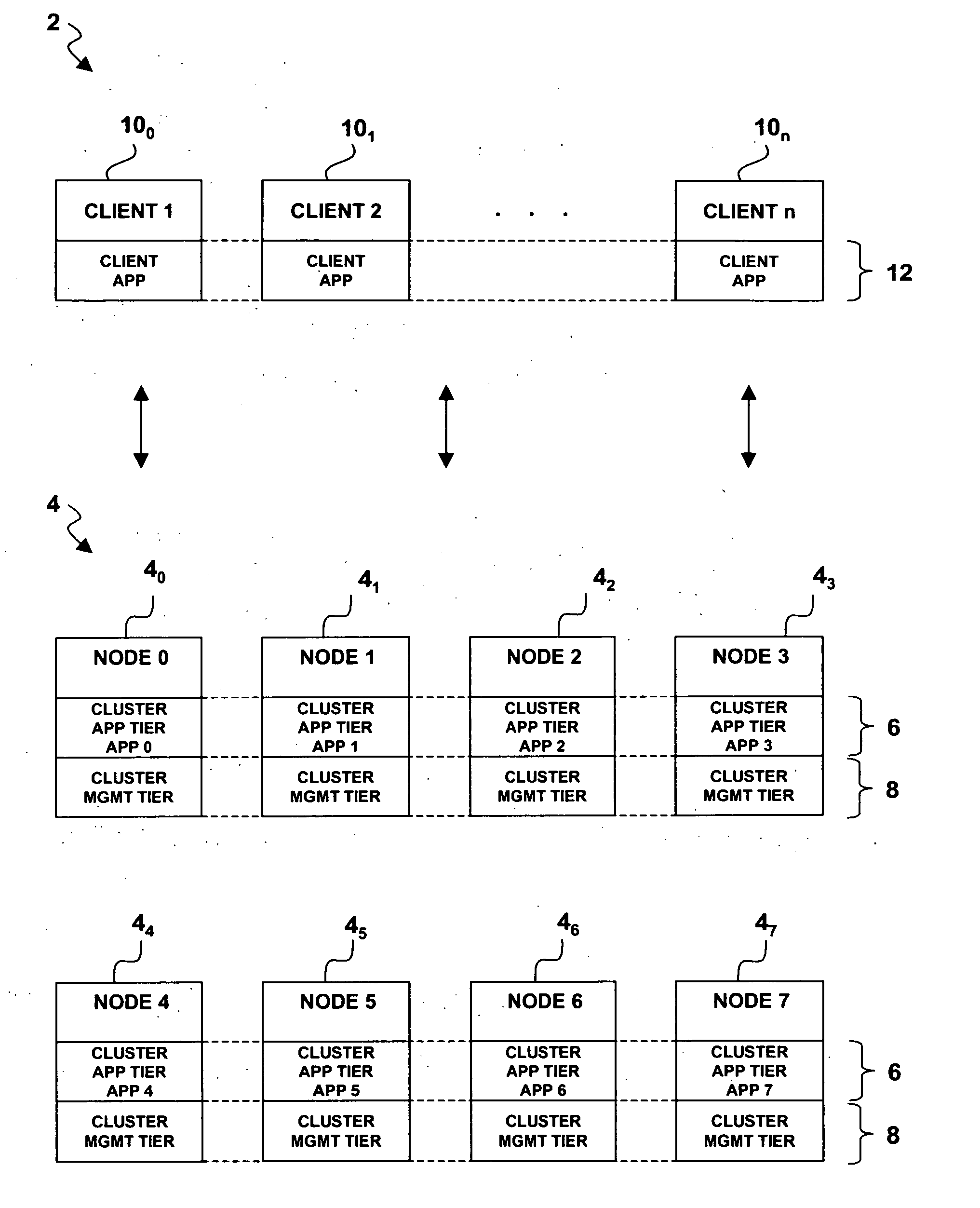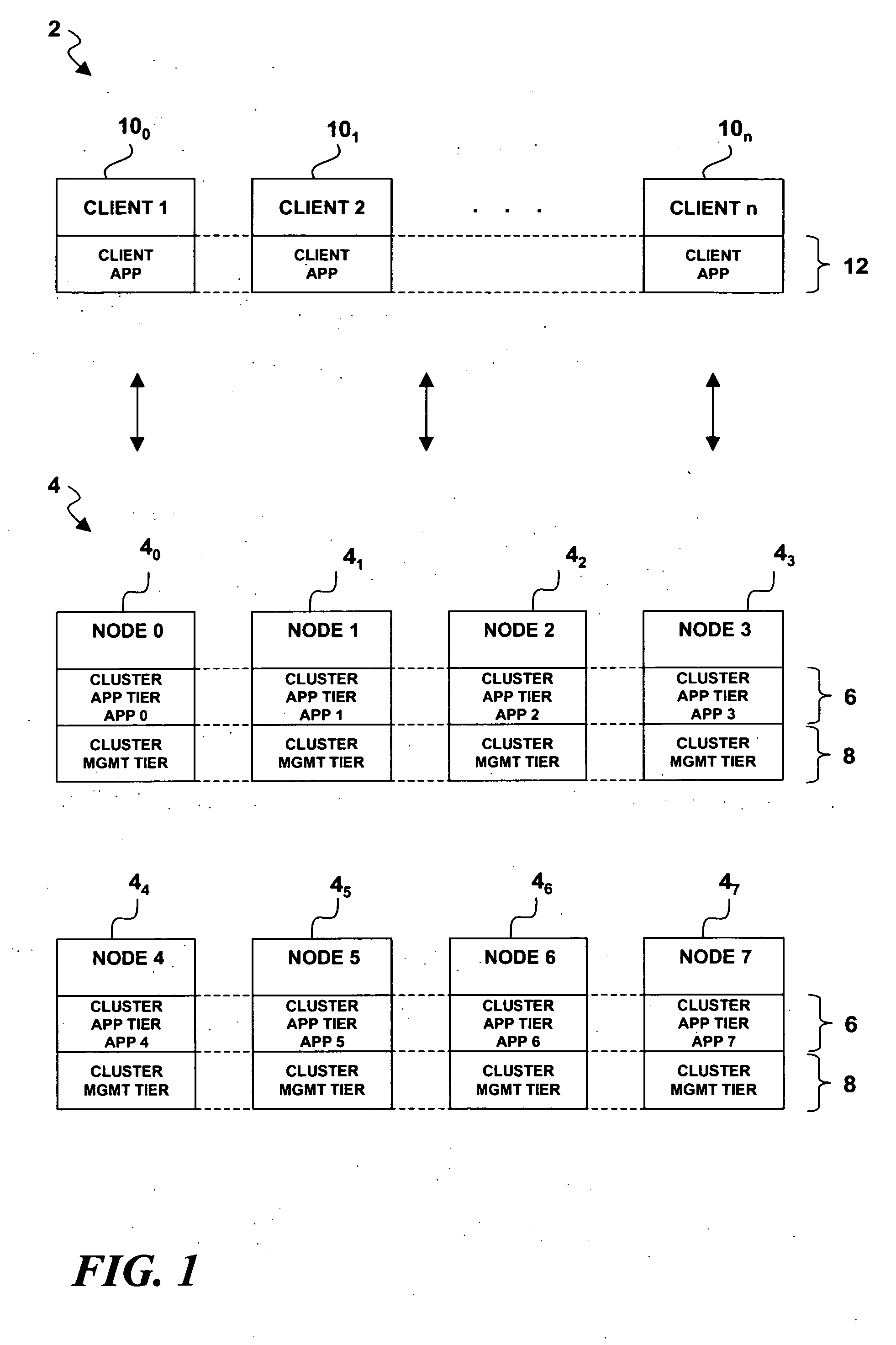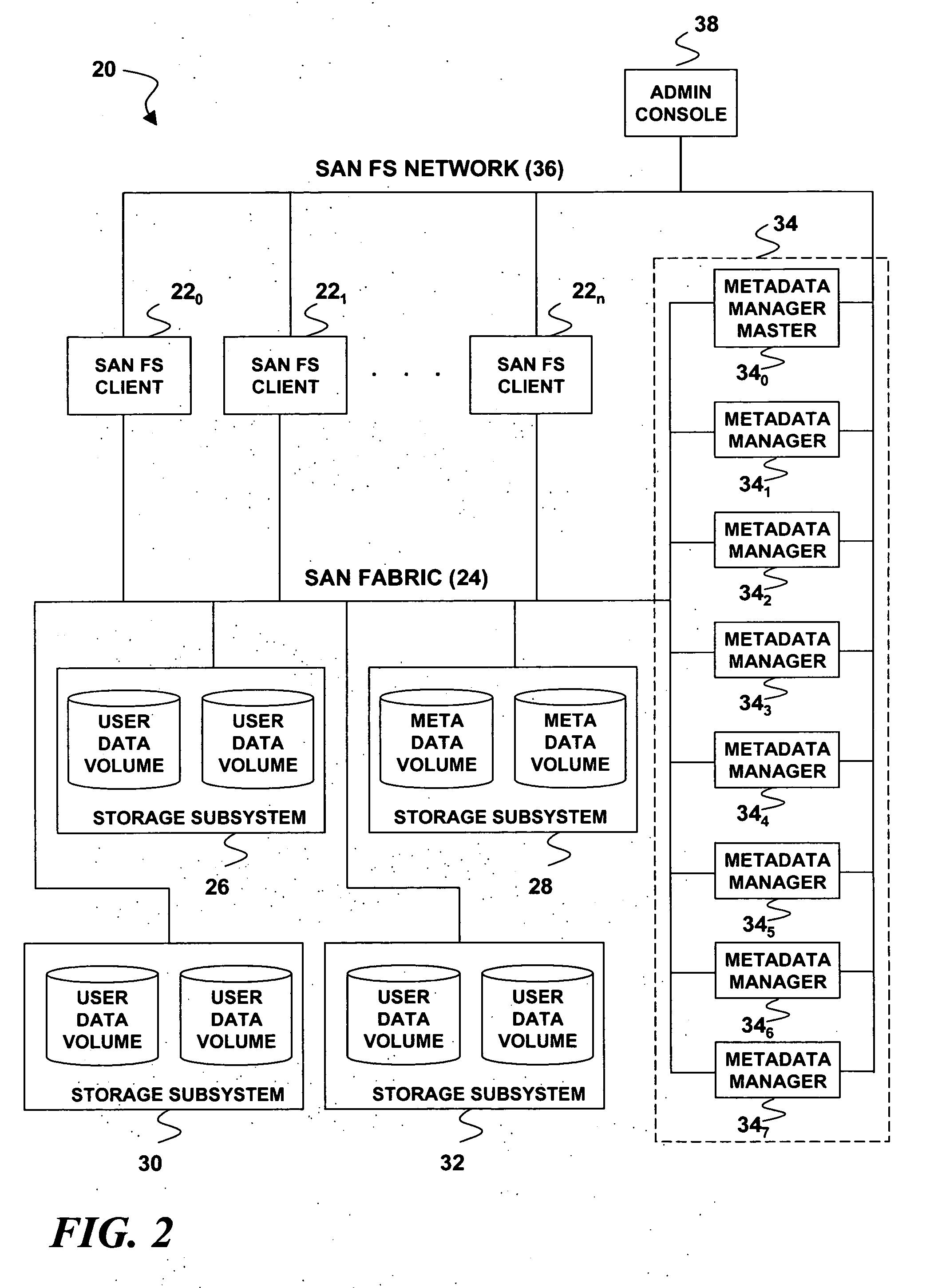Fault-tolerance and fault-containment models for zoning clustered application silos into continuous availability and high availability zones in clustered systems during recovery and maintenance
a clustered system and clustering technology, applied in the field of cluster application recovery, can solve the problems of cluster application recovery protocol limitation, cluster application management tier, normal transactional application protocol limitation, etc., and achieve the effect of preventing protocol oscillation, reducing the size of the fault tolerance zone, and avoiding transaction processing
- Summary
- Abstract
- Description
- Claims
- Application Information
AI Technical Summary
Benefits of technology
Problems solved by technology
Method used
Image
Examples
Embodiment Construction
I. Introduction
[0026] Turning now to the drawing figures wherein like reference numbers indicate like elements in all of the several views, FIG. 1 illustrates a client-server computing architecture 2 wherein the server tier is provided by a server cluster 4. For purposes of illustration only, and not by way of limitation, the server cluster 4 is implemented as a network (network interconnections not shown) that comprises eight server nodes designated by reference numerals 40, 41, 42, 43, 44, 45, 46, and 47. The server nodes 40-47 are computer platforms that run a software stack comprising two tiers, namely, a cluster application tier 6 and a cluster management tier 8. The cluster application tier 6 comprises software that implements a clustered server application providing clustered services on behalf of an arbitrary number of client nodes designated by reference numerals 100, 101 . . . 10n. The clients 100, 101 . . . 10n run client application software within a client application t...
PUM
 Login to View More
Login to View More Abstract
Description
Claims
Application Information
 Login to View More
Login to View More - R&D
- Intellectual Property
- Life Sciences
- Materials
- Tech Scout
- Unparalleled Data Quality
- Higher Quality Content
- 60% Fewer Hallucinations
Browse by: Latest US Patents, China's latest patents, Technical Efficacy Thesaurus, Application Domain, Technology Topic, Popular Technical Reports.
© 2025 PatSnap. All rights reserved.Legal|Privacy policy|Modern Slavery Act Transparency Statement|Sitemap|About US| Contact US: help@patsnap.com



